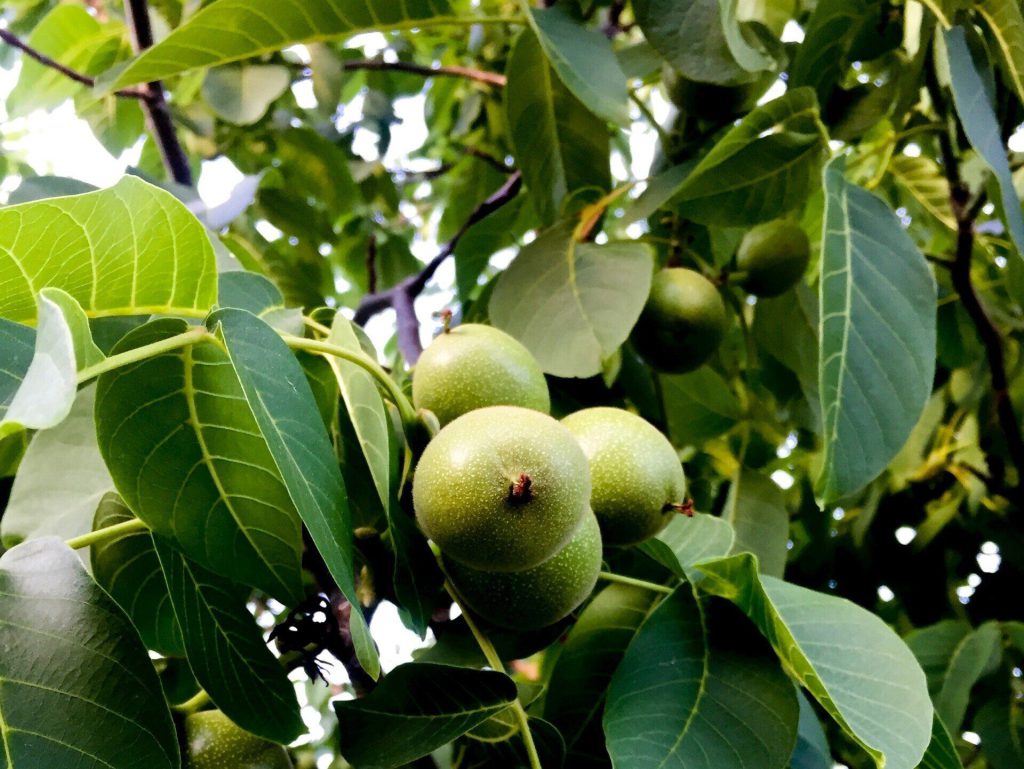Gardening Near Walnut Trees: Understanding Juglone’s Toxin

We sometimes have people come into the greenhouse wondering why their plants have died. One of the questions we might ask, after covering the basics like sunlight and watering, is if there is a walnut tree nearby. Why? If you have a black walnut tree in or near your yard, your soil most likely contains a chemical called Juglone. Juglone is safe for virtually all animals except horses, but it is poisonous to some plants. It is a brilliant adaptation that gives the walnut tree some great advantages. Since it prevents other plants from growing, the walnut tree has little or no competition for water, nutrients, and sunlight. This is great for the tree, but not so great for your garden. Plants exposed to Juglone may wilt, have yellow leaves, not grow well, and may even die.
Most of the toxin is found under the tree canopy, but it can go beyond the tree. There is no way to fix the soil or remove Juglone from it. Even if you remove the walnut tree, Juglone will remain in the soil there for many years, until the tree’s roots are completely decomposed. Plants that are easily poisoned by Juglone include vegetables like asparagus, cabbage, eggplant, peppers, potatoes, rhubarb, and tomatoes; flowers like petunias, columbine, Asiatic lilies, and peonies; and trees and shrubs like hydrangeas, rhododendron, yew, crabapple, Norway spruce, and silver maple.
You can still have a beautiful yard and garden even if you have walnut trees. Many plants are resistant to Juglone, which means that they grow very will near and even under walnut trees. Grow these plants closest to the tree and plant other, more susceptible, plants as far away from your walnut tree as possible, or grow them in planters, pots and raised garden beds.
Annuals are resistant to Juglone’s toxin include begonia, impatiens, pansy, viola, and zinnia. Perennials that can thrive near walnut trees are ajuga, astilbe, bellflower, black eyed Susan, bleeding heart, chrysanthemums, clematis, coral bells, daylily, evening primrose, globeflower, ferns, hollyhock, hosta, Jack in the pulpit, Jacob’s ladder, lamb’s ear, meadow rue, phlox, sedum, shasta daisy, Siberian iris, sweet woodruff, and trillium, among others. You should also be able to the following vegetables too: beans, beets, carrots, corn, melon, onions, and squash.
There are also many trees and shrubs that are resistant to Juglones. Some are arborvitae, barberry, deutzia, elderberry, forsythia, hawthorn, hickory, juniper, mock orange, Ohio buckeye, oak, pear, redbud, river birch, serviceberry, staghorn sumac and viburnum.
The key to a beautiful, healthy garden is to always work with what you have, whether that is sun, shade, or toxins in the soil. If you pair the right plants with the conditions you have, your plants will thrive.
